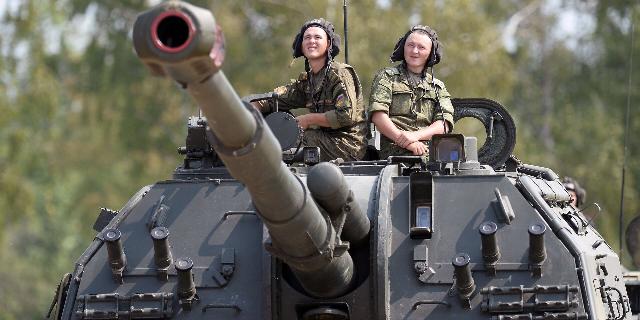The Russian ground forces received an upgraded version of the Msta-S self-propelled howitzer. The adoption of the Msta-S and Coalition-SV artillery systems will give a powerful impetus to the development of artillery of the Russian troops. And the US armed forces intend to continue using upgraded versions of the 1960s M109 Paladin self-propelled artillery system.
Dave Majumdar
The adoption of the Msta-S and Coalition-SV artillery systems will give a powerful impetus to the development of artillery of the Russian ground forces. Meanwhile, the US Army intends to continue using upgraded versions of the 1960s M109 Paladin self-propelled artillery system.
Russian ground forces have begun to receive an upgraded version of the Msta-S self-propelled howitzer. This new self-propelled gun will be used until the more modern 2C35 Coalition-SV howitzer arrives in sufficient numbers.
"The military units of the 1st Tank Army stationed in the Moscow Region received dozens of Msta-S self-propelled artillery units," the Russian Ministry of Defense said in a statement. - The military personnel of the artillery units of the Taman and Kantemirov divisions have completed the acceptance of military equipment from representatives of the military-industrial complex, and this equipment is being put into service. The crews have undergone appropriate retraining and are starting to operate them. This self-propelled artillery will be placed in specially built parks with the necessary infrastructure."
"The new equipment will take part in the combat artillery firing of the 1st Tank Army, which should take place at the final stage of the summer training period," the statement says.
The new howitzers have an improved fire control system and many other new elements that were not present in the basic Msta-S system.
"The authors made a small mistake. Troops today are equipped not with the basic version of the Msta-S, but with an upgraded version of the Msta-SM, which has a new fire control system and some other improvements," Vasily Kashin, senior researcher at the Center for Integrated European and International Studies at the Moscow Higher School of Economics, told The National Interest.
Researcher Mikhail Barabanov, who works as the editor of the Moscow Defense Vrief, published by the Center for Analysis of Strategies and Technologies, told The National Interest that the new howitzer is an upgraded version of the Msta-S, but according to the classification of the Russian Ministry of Defense, it is not called the Msta-SM. "Msta-SM is an old project with the number 2C33 (2C19M). This project was abandoned in favor of 2C35 "Coalition"," explained Barabanov.
But most likely, the original "Msta-S" had the designation 2C19M1, and the newer and upgraded version is called 2C19M2. Anyway, Barabanov said, she retained the designation "Mst-S". In any case, since the mass production of the Coalition-SV is still several years away, a sufficiently effective Msta-S will allow the Russian ground forces to be armed with modern artillery systems before receiving new howitzers.
The Msta-S is based on the 152 mm 2A65 howitzer, which is capable of firing about eight rounds per minute. The new version is likely to have a higher rate of fire, as it is equipped with a new gun and an improved automatic loader.
"These howitzers will be made before the start of full-scale production of the Coalition," Kashin said.
"They have a new fire control system, an improved gun and loading mechanism."
The Mstu-S will eventually be replaced by the Coalition-SV, which is being created on the basis of the 152-millimeter 2A88 gun, which has a rate of fire from 15 to 20 rounds per minute. The new system will begin limited use in the military by the end of the year, but it will enter service in the next decade.
"I think it was a statement about the limited number of howitzers that will be delivered to the troops by the end of this year," Kashin said.
The adoption of the Msta-S and Coalition-SV artillery systems will give a powerful impetus to the development of artillery of the Russian ground forces. Meanwhile, the US Army intends to continue using upgraded versions of the 1960s M109 Paladin self-propelled artillery system.

